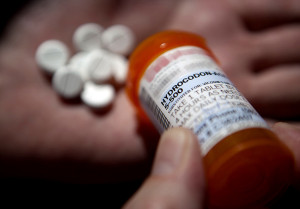
Dr. Mark Gold's Research You Can Use
The article discusses five different, yet highly relevant studies regarding recent substance abuse trends and the consequences. The first study focuses on the expanding cannabis market and its ever-increasing range of products, creating an atmosphere of uncertainty for users and its effects.
The second study digs deeper into the gateway hypothesis addressing several essential but unaddressed aspects such as gender and transgenerational connections.
The third study explores an unusual insight into the analgesic effect of hunger on pain inflammation, questioning the extent our appetites can influence pain management.
The next study MDMA-assisted psychotherapy for PTSD in first responders and the final research paper takes a more in-depth look at the changes in the levels and trends of the diseases, injuries and the risk factors in the United States from 1990 to 2016 and the consequent burden experienced by the population.
The Expanding Cannabis Market, Consumption and the Importance for Clinicians
Since 1996, 30 states have passed legislation that legalizes medical cannabis. Nine of these 30 states have also legalized the use of recreational marijuana. Moreover, surveys have repeatedly depicted an increasingly favorable American public opinion on the matter, further encouraging the sale of adult-use and medicinal marijuana.
 This transition toward the legalization of cannabis has brought with it the emergence of a rapidly flourishing multi-billion-dollar cannabis industry. The market has witnessed a massive influx of high-potency herbal cannabis, cannabis edibles, cannabis oils, and concentrates, and topical preparations.
This transition toward the legalization of cannabis has brought with it the emergence of a rapidly flourishing multi-billion-dollar cannabis industry. The market has witnessed a massive influx of high-potency herbal cannabis, cannabis edibles, cannabis oils, and concentrates, and topical preparations.
Furthermore, consumers also now possess the ability to choose products based on a variety of concentrations of the pharmacologically active chemicals in cannabis: tetrahydrocannabinol (THC) and cannabidiol (CBD).
Such fast-paced changes make it even more crucial for health care providers to understand the widely emerging cannabis products, the variations that exist between these products and how to equate cannabis use based on the information provided by patients.
The past half-century has witnessed an increase in THC concentrations. During the 1960s, smoked cannabis typically involved a THC concentration of about one-half to one percent by weight. The 1970-2000s saw this strength surge to 5 percent of THC concentration, owing to the selective breeding of high-THC cannabis.
Today, some strains have reached 30 percent or even higher. These are relevant changes as repeat use is related to dose, time of the reinforcing drug to the brain, and duration. Another major factor is the age of the user. This is also relevant as the THC in second-hand smoke is related to the changes that being near someone who is smoking can influence and change your own brain.
More concentrated versions, such as hashish, are required in much smaller doses. Such discrepancies in dosage sizes between herbal and concentrated cannabis products can lead to overuse and adverse consequences such as psychosis and cognitive impairment.
Edible cannabis products cause inconsistent absorption and extensive metabolizing of THC, creating effects 2 to 4 hours after ingestion, that can last up to 6 to 8 hours. Cannabis oils and topicals are largely homemade, and THC levels remain an ambiguity.
Why does the Expanding Cannabis Market matter?
There are increasing concerns over the adverse consequences of cannabis who did not consent to smoke or ask for marijuana smoke by-products in their lungs and bodies. In the face of an extensively increasing market for cannabis and lack of an FDA research process where safety and proof of efficacy come first, we do not know as much as we know, about other drugs of abuse that have important uses in medicine.
We do not have real-life or even Pharma quality experiments on dose, absorption, purity and drug interactions across ages and genders. We do not know what dose is best and how to guarantee it is delivered without harm.
Hence, many accompanying marketing claims of cannabis products are often well-meaning but, not evidence-based. This promising pain treatment or that promising treatment for ulcerative colitis and other cures are not scientifically valid or supported by evidence.
This is atypical of the usual process where any proposed medication is considered unreliable until proven safe and effective for a specific medical problem until tested and approved so by the FDA. Cocaine, morphine, and other drugs are approved for use by the FDA on the basis of these tests and ketamine and psilocybin are proceeding toward approval as well.
Hence, clinicians need to counsel patients on the state of the evidence. Adults may decide to smoke marijuana believing that they have a smoking-responsive illness. Clinicians should help them avoid exposing others via second-hand smoke and present what we know about health concerns and impaired driving.
From a psychiatric aspect, patients at risk of psychosis and bipolar disorder are strongly discouraged from cannabis consumption. Marijuana, like other drugs that stimulate their own taking can and do produce addiction.
As a result of the expanding cannabis market, marijuana use disorders are increasing and common among people with other substance use problems too. Long-term effects may include impaired memory, troubled concentration and lack of motivation. This study reiterates the importance of keeping up with the evolving use of cannabis to better assess and treat use disorders and counsel patients.
The Cannabis Gateway Hypothesis
The gateway hypothesis was proposed by Bob Dupont, MD the Founding Director of NIDA and updated since that time. In essence, he argued that substance abuse in adolescence, even that of legal substances such as nicotine and alcohol, can change the brain and set precedence for excessive illegal drug use in adulthood.
 Hence, such addictive behavioral tendencies early on in life act as a “gateway” for future substance abuse disorders. This conceptual model presents profound biological, social and public policy implications. Yet, a number of research studies failed to establish a causal relationship.
Hence, such addictive behavioral tendencies early on in life act as a “gateway” for future substance abuse disorders. This conceptual model presents profound biological, social and public policy implications. Yet, a number of research studies failed to establish a causal relationship.
Even though Fredriksson et al. in 2016 found no subsequent implications owing to alcohol abuse in young adulthood upon future cocaine abuse, the study conducted on self-administering rats helped contribute to the importance of behavioral predictors of addiction, such as thrill-seeking.
It is important to realize that substance use disorders are based on multifaceted complexities. Furthermore, the human brain’s reactions to any particular drug are vastly dynamic and considering how it develops during adolescence and young adulthood, the developmental period of drug exposure is an important gateway to consider.
My own work showed that marijuana smoking in teenage years was a gateway to smoking. Cigarette smoking could follow or precede marijuana smoking. But, learning how to inhale drug vapors was a critical event, not to be trivialized,
Another important emerging factor to consider is the interaction between certain substance exposures and the vulnerability of the coinciding drug class that was altered. Even though research remains controversial, literature supports a considerably consistent relationship between adolescent alcohol exposure and future alcohol consumption.
Such coinciding drug interactions also extend to the possibility of adolescent nicotine exposure upon future psychostimulant use. Similarly, adolescent cannabinoid exposure sensitizes an individual to opioid but not psychostimulant use.
Increasing research efforts have recently been focused upon the importance of gender in addiction vulnerability. Human studies indicate males to be more at risk for substance use disorders even though females presented greater sensitivity to the supporting properties of drugs. Data, however, still remains limited to draw any definitive conclusions.
Another interesting aspect is that of transgenerational transmission. Cross-generational effects were noticed in cases of parental exposure during adolescence to have significantly increased the subsequent adult offspring’s heroin self-administration behavior.
Why does it matter?
The concept of the gateway hypothesis has garnered extensive attention and also research. Yet, there remain ambiguities that require the utmost attention to curb the epidemic of substance use disorders.
Many complex factors still remain unattended to including social, psychological and legal considerations. Despite the substance being abused, teen use has been proven to result in significant brain alterations, posing greater vulnerability to future binges, misuse, and lifetime use.
Hence, it’s all the more important to understand the complexities of drug exposure on a developing mind in order to secure the future of upcoming generations.
A Neural Circuit for the Suppression of Pain by a Competing Need State.
This study represents hunger and pain as competing signals, in relation to survival. The researchers established that hunger weakens the behavioral responses and diminishes effective reactions elicited from inflammatory pain without causing any alterations to acute pain responses.
 Hunger-sensitive agouti-related protein (AgRP)-expressing neurons evade inflammatory pain. Systematic analysis of these neurons illustrated a convergence of the neural processes of both hunger and pain in the hindbrain parabrachial nucleus (PBN).
Hunger-sensitive agouti-related protein (AgRP)-expressing neurons evade inflammatory pain. Systematic analysis of these neurons illustrated a convergence of the neural processes of both hunger and pain in the hindbrain parabrachial nucleus (PBN).
Interestingly, such activity of neurons was observed present hunger exuding an analgesic effect by blocking the behavioral responses to inflammatory pain.
The researchers have identified a neural circuit, right at the intersection between hunger and pain, which facilitates competing rival needs and revealed NPY Y1 receptor signaling in the PBN as means of attenuating inflammatory pain during hunger.
Why does this matter?
There is an urgent need for new pain treatments. Using non-opioid pathways for modulating and treating pain would help treat pain and also could reduce the dependence on opioid pain medicines.
This research provides neurochemical and neuroanatomical targets for further research and continues to suggest the relevance of how much and what we eat for managing behavioral responses to pain.
MDMA Assisted Psychotherapy for Post-Traumatic Stress Disorder (PTSD)
PTSD is highly prevalent amongst war veterans, military personnel, and first responders. For such population specifically, this study assessed the effectiveness and safety of a 3,4-methylenedioxymethamphetamine (MDMA)-assisted psychotherapy as a means of treatment for chronic PTSD.
The study recruited service personnel, aged 18 years and older, suffering from chronic PTSD for the past six months or more, and had a total score of 50 or more on the Clinician-Administered PTSD Scale (CAPS-IV).
Based on a web-based randomized system, participants were arbitrarily assigned to three different groups varying as per their respective doses of MDMA alongside psychotherapy: 30 mg for the control group, and 75mg and 125mg for the other two groups.
 Participants in the control group and 75 mg groups eventually underwent three 100-125 mg MDMA-assisted psychotherapy sessions, and all participants were examined after a period of 12 months. Safety was tracked through consistent reporting of adverse events, expected reactions, vital signs, and suicidal ideation and behavior.
Participants in the control group and 75 mg groups eventually underwent three 100-125 mg MDMA-assisted psychotherapy sessions, and all participants were examined after a period of 12 months. Safety was tracked through consistent reporting of adverse events, expected reactions, vital signs, and suicidal ideation and behavior.
Results revealed that both the 75 mg and 125 mg groups experienced considerably more significant decreases in PTSD symptoms than compared to the 30 mg group. In the crossover with full-dose MDMA (100-125 mg), PTSD symptom severity significantly decreased in the group that had previously received 30 mg.
No further noticeable reductions were observed in the group that had previously experienced greater reductions after the 75 mg doses. 20 participants reported 85 adverse events. Five percent of these were serious, three were considered irrelevant, and one was found to be possibly related to study drug treatment.
Active doses (75 mg and 125 mg) of MDMA with adjunctive psychotherapy in a controlled setting were deemed effective in reducing PTSD symptoms in veterans and first responders.
Why does it matter?
An estimated 70 percent of adults in the United States have experienced a traumatic event at least once in their lives, and up to 20 percent of these people go on to develop posttraumatic stress disorder or PTSD. An estimated 5 percent of Americans, translating to more than 13 million people, have PTSD at any given time.
Given the high prevalence of PTSD, there is a dire need for innovating theories, better treatments and a clearer understanding of PTSD. Medications should be viewed as dangerous until proven safe and effective.
These trials, similar to those for Ketamine and others in the emerging specialty of psychedelic medicine, do not rely on a nutraceutical approach or legalization but rather evidence-based, random-assignment placebo-controlled trials suitable for FDA submission.
Burden of Diseases, Injuries and Risk factors
This study takes a more in-depth look at the changes in the levels and trends of the diseases, injuries and the risk factors in the United States from 1990 to 2016 and the consequent burden experienced by the population. The study closely examined 333 causes and 84 risk factors through a systematic analysis of published studies and existing data sources.
From 1990 to 2016, the general death rates in the United States declined from 745.2 per 100,000 persons to 578 per 100,000 persons. Among adults aged 20 to 25 years, the probability of death was diminished in 31 states and Washington, DC over the specified time period. Five states, however, experienced a more than 10 percent rise in the probability of death for adults, aged 20 to 55 years, between 1990 and 2016.
 The leading causes of disability-adjusted life years (DALYs) in the United States for 1990 and 2016 remained ischemic heart disease and lung cancer, while the third leading cause in 1990 was low back pain, and replaced by chronic obstructive pulmonary disease in 2016. Opioid use disorders skyrocketed from the 11th leading cause of DALYs in 1990 to the 7th leading cause in 2016, translating to a shocking 74.5 percent increase.
The leading causes of disability-adjusted life years (DALYs) in the United States for 1990 and 2016 remained ischemic heart disease and lung cancer, while the third leading cause in 1990 was low back pain, and replaced by chronic obstructive pulmonary disease in 2016. Opioid use disorders skyrocketed from the 11th leading cause of DALYs in 1990 to the 7th leading cause in 2016, translating to a shocking 74.5 percent increase.
In 2016, tobacco consumption, high body mass index, poor diet, alcohol and drug use, high fasting plasma glucose, and high blood pressure were the six risks that distinctively accounted for more than 5 percent of risk-attributable DALYs. Across all US states, the top risk factors were due to tobacco consumption (32 states), high BMI (10 states), or alcohol and drug use (8 states).
Why does this matter?
Specific diseases and risk factors, such as drug use disorders, high BMI, poor diet, high fasting plasma glucose level, and alcohol use disorders are notably following increasing trends and demand a dire need for attention. Well-designed strategies are needed to be in place to manage these risk factors effectively.
It is essential to bear in mind that all States are not the same. There exist vast differences in the burden of disease at the state level.
These findings point to an urgent need to address mental health and drug use disorders in the United States. There is a need for improved access to quality mental health care and screening to improve outcomes, alongside specifically-designed programs to prevent mental disorders and promote mental health.
About the Author:
 Mark S. Gold, M.D. served as Professor, the Donald Dizney Eminent Scholar, Distinguished Professor and Chair of Psychiatry from 1990-2014. Dr. Gold was the first Faculty from the College of Medicine to be selected as a University-wide Distinguished Alumni Professor and served as the 17th University of Florida’s Distinguished Alumni Professor.
Mark S. Gold, M.D. served as Professor, the Donald Dizney Eminent Scholar, Distinguished Professor and Chair of Psychiatry from 1990-2014. Dr. Gold was the first Faculty from the College of Medicine to be selected as a University-wide Distinguished Alumni Professor and served as the 17th University of Florida’s Distinguished Alumni Professor.
Learn more about Mark S. Gold, MD
About the Transcript Editor:
 A journalist and social media savvy content writer with extensive research, print and on-air interview skills, Sana Ahmed has previously worked as staff writer for a renowned rehabilitation institute, a content writer for a marketing agency, an editor for a business magazine and been an on-air news broadcaster.
A journalist and social media savvy content writer with extensive research, print and on-air interview skills, Sana Ahmed has previously worked as staff writer for a renowned rehabilitation institute, a content writer for a marketing agency, an editor for a business magazine and been an on-air news broadcaster.
Sana graduated with a Bachelors in Economics and Management from London School of Economics and began a career of research and writing right after. Her recent work has largely been focused upon mental health and addiction recovery.
References:
1. Peters J, Chien J Contemporary Routes of Cannabis Consumption: A Primer for Clinicians. J Am Osteopath Assoc. 2018 Feb 1;118(2):67-70. doi: 10.7556/jaoa.2018.020
2. Miller, M. L., & Hurd, Y. L. (2017). Testing the Gateway Hypothesis. Neuropsychopharmacology, 42(5), 985–986. http://doi.org/10.1038/npp.2016.279
3. Alhadeff AL, Su Z, Hernandez E1, Klima ML, Phillips SZ, Holland RA, Guo C, Hantman AW, De Jonghe BC, Betley JN. A Neural Circuit for the Suppression of Pain by a Competing Need State.Cell. 2018 Mar 22;173(1):140-152.e15. doi: 10.1016/j.cell.2018.02.057.
4. Mithoefer MC, Mithoefer AT, Feduccia AA, Jerome L, Wagner M, Wymer J, Holland J, Hamilton S, Yazar-Klosinski B, Emerson A4, Doblin R. 3,4-methylenedioxymethamphetamine (MDMA)-assisted psychotherapy for post-traumatic stress disorder in military veterans, firefighters, and police officers: a randomised, double-blind, dose-response, phase 2 clinical trial. Lancet Psychiatry. 2018 Jun;5(6):486-497. doi: 10.1016/S2215-0366(18)30135-4. Epub 2018 May 1.
5. US Burden of Disease Collaborators, The State of US Health, 1990-2016: Burden of Diseases, Injuries, and Risk Factors Among US States. JAMA. 2018 Apr 10;319(14):1444-1472. doi: 10.1001/jama.2018.0158.
The opinions and views of our guest contributors are shared to provide a broad perspective of addictions. These are not necessarily the views of Addiction Hope, but an effort to offer a discussion of various issues by different concerned individuals.
We at Addiction Hope understand that addictions result from multiple physical, emotional, environmental and genetic factors. If you or a loved one are suffering from an addiction, please know that there is hope for you, and seek immediate professional help.
Published on September 28, 2018
Reviewed by Jacquelyn Ekern, MS, LPC on September 28, 2018
Published on AddictionHope.com
